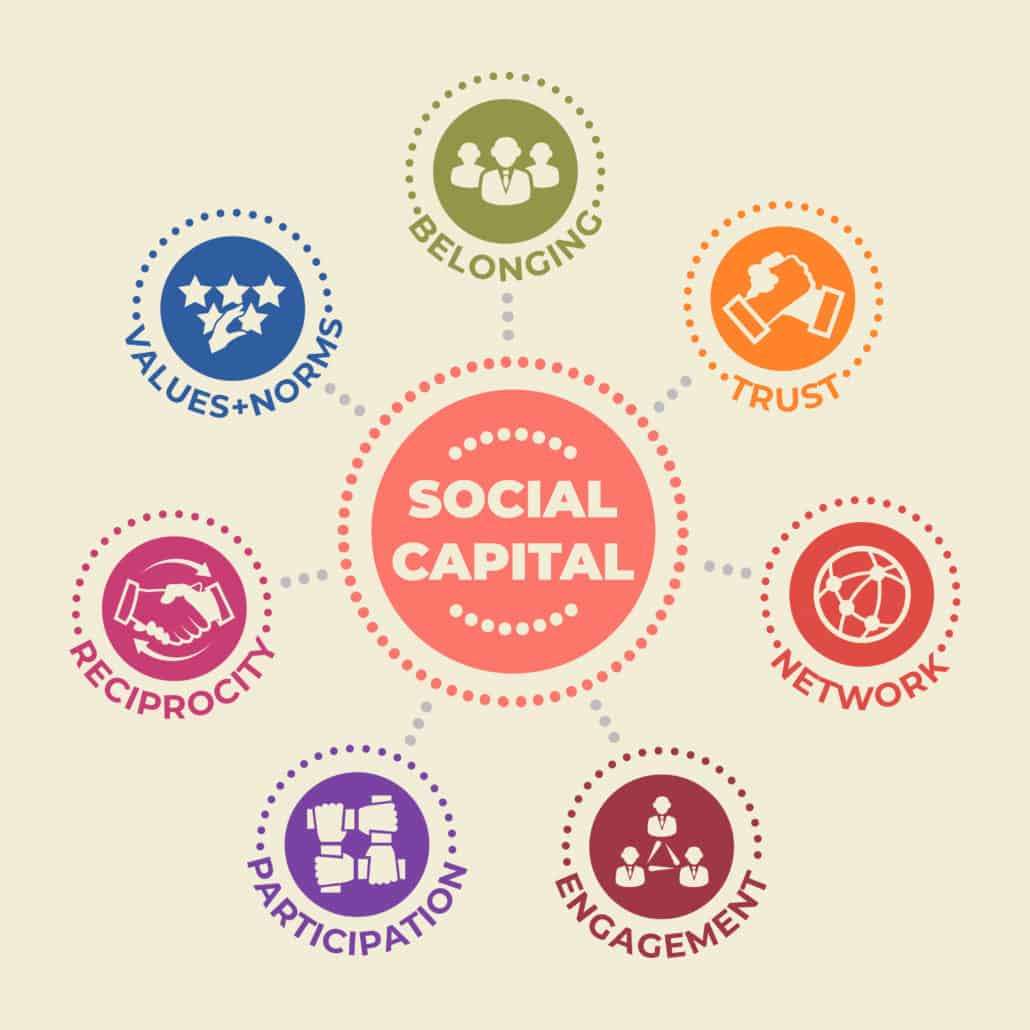Social Capital in the FamBiz World
The Human Need for Connection
Sometimes I surprise myself with a blog topic that feels like I’ve written about before, but discover that it’s still virgin territory.
This is one such post.
Given that most of my coaching sessions with clients is spent on their relationships with other people, usually family members, and that my latest book is specifically about family systems theory, I’m actually a bit shocked that I haven’t yet addressed the subject of “social capital” in my blog.
Maybe it’s just a term whose time has come.
My Personal Social Capital “A-Ha”
Last week in An Uplifting Week, at Sea Level, we looked at the recent RendeZoom I had attended with a few hundred colleagues, who I affectionately called “my tribe”.
And even though this annual event was held virtually this year, I still felt very close to many of the people who attended with me.
That whole experience put the idea of “social capital” onto my radar, and yet I wasn’t sure that the term was well understood.
I mentioned it to my coach, and even she wasn’t sure what I meant when I noted that I felt I had lots of social capital.
Sometimes you find inspiration in unexpected places, and when I searched Shutterstock for an image to accompany this post, entering “social capital” as the search term, I got a nice surprise; clearly I was not the only person who ever considered this term.
A Whole List of Sub-Topics
The image I chose contains a slew of ideas that make it pretty easy to get what I’m driving at:
Belonging, Network, Participation, Trust,
Engagement, Reciprocity, Values-Norms.
I think it’s simple enough to understand how in a large group of professional colleagues, especially in a “horizontal” field where many disciplines are represented, social capital can be important in maximizing what one can get out of being a member.
But where I really want to go with this is into individual families and their social capital, because there’s some good stuff to look at there too.
External Social Capital in Enterprising Families
Family business leaders, by virtue of their status and accumulated experience, naturally develop networks of people with whom they interact on a regular basis over the years.
These relationships are often based on trust, and that trust can and should be transitioned from one generation of the family to the next.
This becomes one of the important assets that a family enterprise has, and smart, proactive families leverage this social capital, which often becomes one of the key advantages that family businesses have.
What About WITHIN the Family?
But as much as this social capital, from the family to the outside world, can be something worth cultivating, I want to talk about an often neglected area of “social capital”, namely the relationships within the family itself.
Not every family member is cut out for this role, but this field now has enough research behind it to make it clear that a “family champion” is almost always present in families who manage to keep the family together over a series of generations.
There’s a certain amount of intentional effort that must be given to the roles of engaging the whole family in the constant, long-term pursuit of its longevity as a cohesive unit.
Different Leadership Styles Come into Play
When you think about family businesses and their leadership, it’s natural to think about the person at the head of the business.
The leaders I’m talking about here are different, but at some points in the evolution of the family the roles can both be held by one person.
The “Family Leader” is the one who undertakes the role of connecting with the family members, whether or not they are involved in the operations of the business.
Their concern spans areas like Belonging, Participation, and Engagement, and these leaders are constantly building Trust along the way.
Proactive, Intentional Steps, Over and Over
Such family leaders are very much like a “team captain” in sports, often demonstrating quiet leadership as much thanks to “who they are” as to “what they do”.
But what they do, while often hard to describe because there are so many intangibles, is keep the family working together, because they know deep down how important that is for the greater good of everyone.
A family’s legacy is as much about people as it is about assets, after all. See Is Your Continuity PAL in Danger?
And that’s all about social capital.





